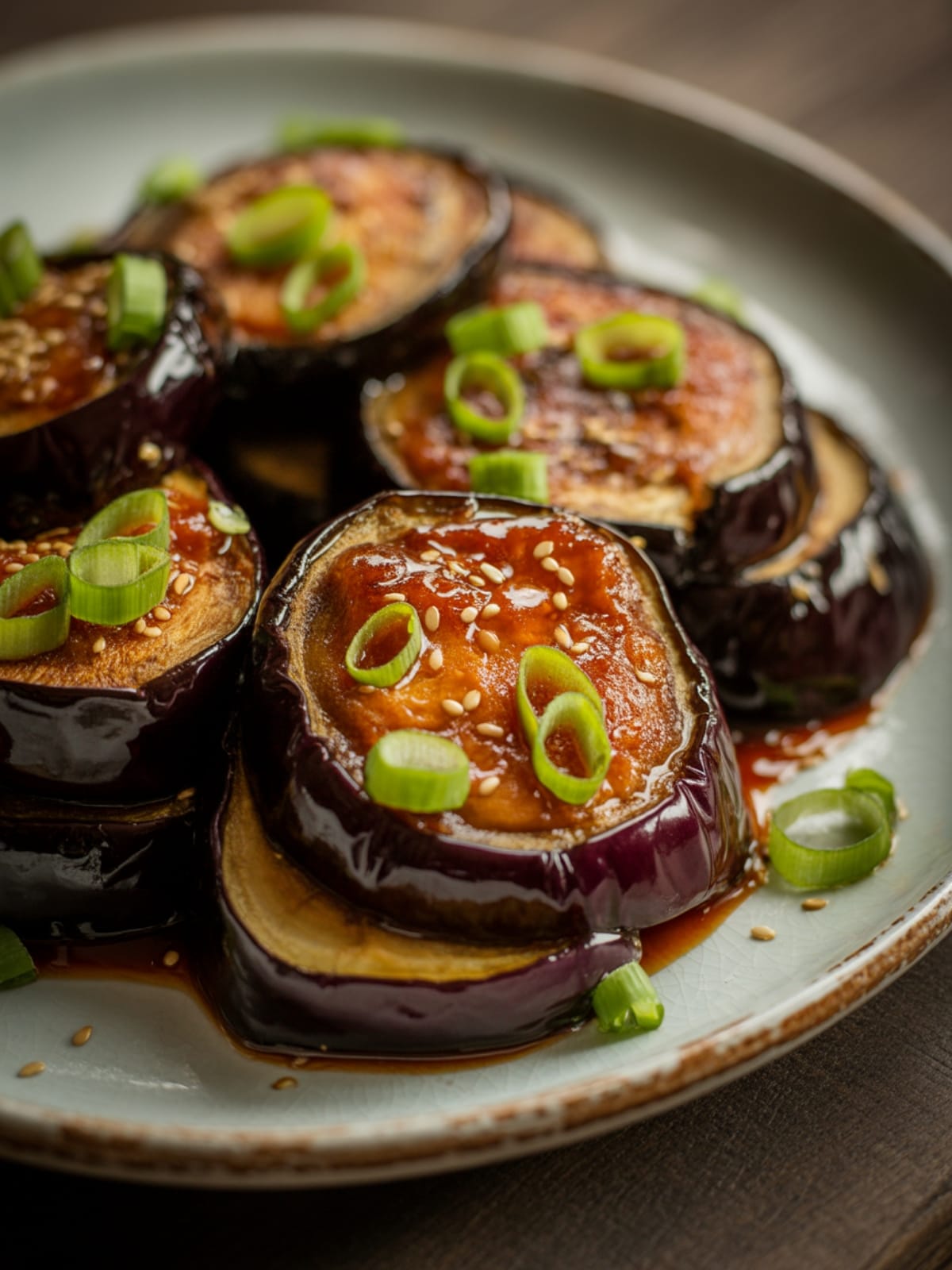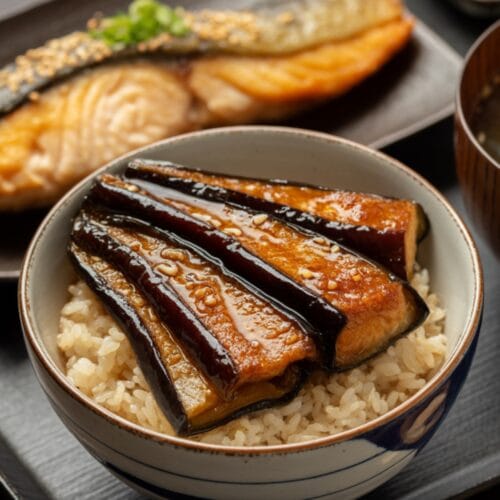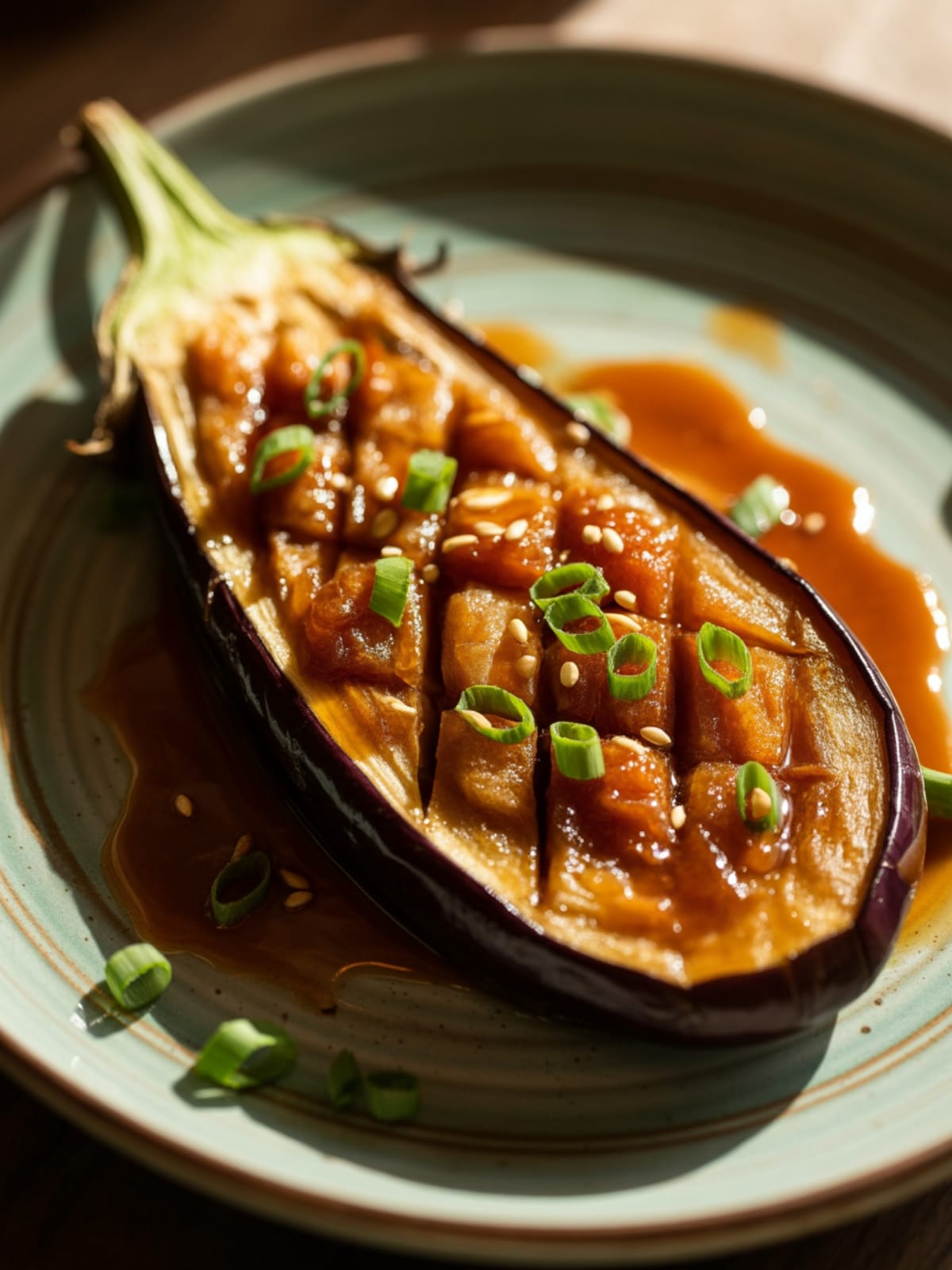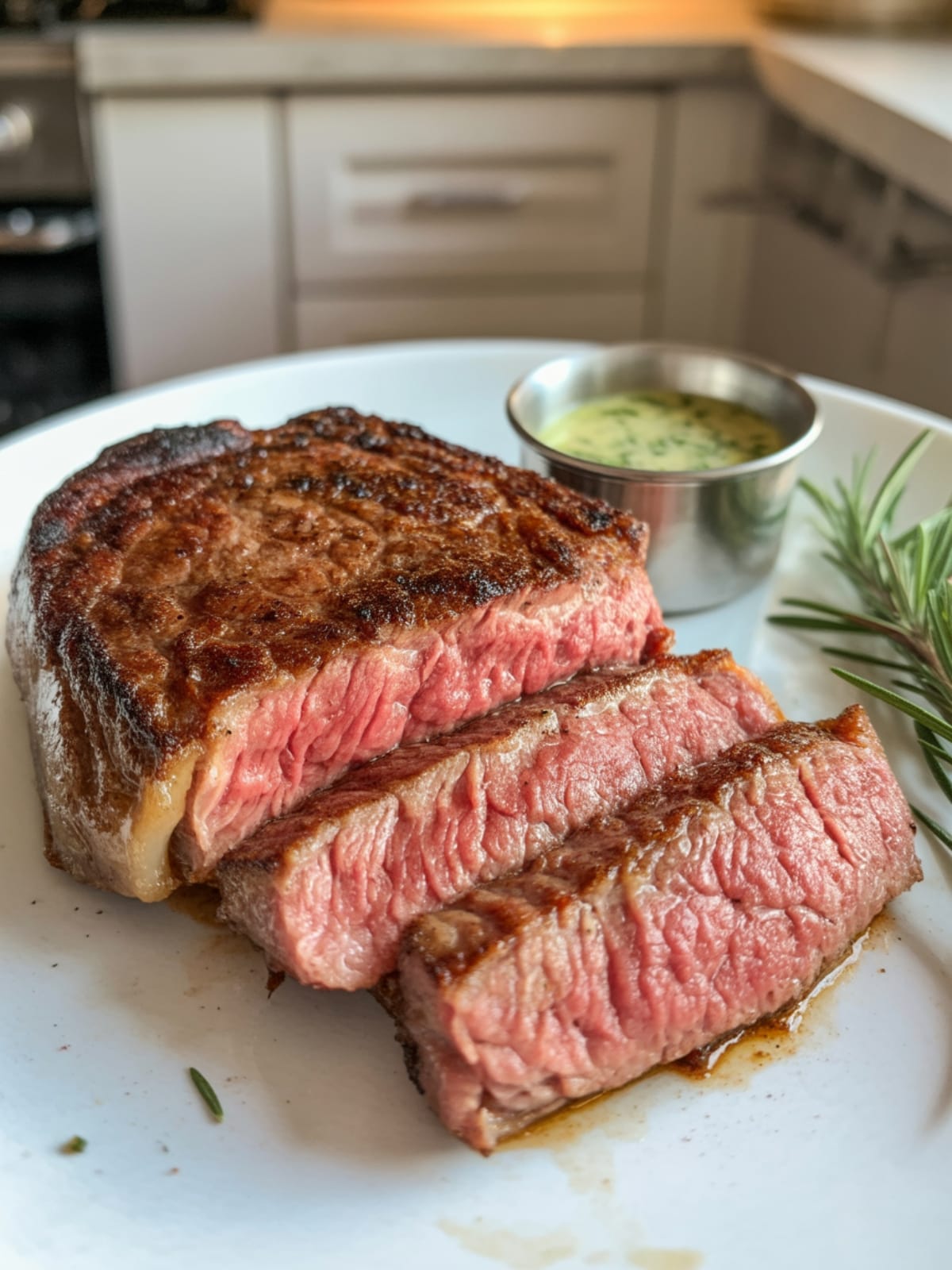Ever tasted something so deeply satisfying it makes you close your eyes and savor the moment? That’s Miso Aubergine (or Nasu Dengaku as it’s traditionally known in Japan). This velvety, caramelized dish transforms the humble eggplant into something magical with just a handful of ingredients.
The sweet-savory glaze creates a flavor explosion that will have you wondering why you haven’t been making this all your life.
Why This Recipe is Awesome

Miso Aubergine isn’t just delicious—it’s a culinary revelation. The miso paste creates an incredible depth of umami that perfectly complements the creamy texture of properly cooked eggplant. What makes this recipe special is how it elevates a simple vegetable into restaurant-quality fare with minimal effort.
Unlike many eggplant dishes that can be oily or bland, this preparation celebrates the vegetable’s natural texture while infusing it with complex flavors. It’s versatile enough to serve as a show-stopping side dish, a vegetarian main when paired with rice, or even as part of a larger Japanese-inspired feast. The caramelization that happens when the miso glaze meets high heat creates irresistible flavor dimensions that even vegetable skeptics can’t resist.
Plus, it’s naturally plant-based, making it perfect for modern, health-conscious eating without sacrificing an ounce of taste.
Equipment needed: Baking sheet, sharp knife, mixing bowl, pastry brush or spoon

Miso Aubergine
Ingredients
- 2 medium aubergines eggplants
- 2 tablespoons vegetable oil
- 3 tablespoons white or yellow miso paste
- 2 tablespoons mirin Japanese sweet rice wine
- 1 tablespoon sake or dry white wine
- 1 tablespoon honey or maple syrup
- 1 teaspoon sesame oil
- 1 tablespoon toasted sesame seeds for garnish
- 2 spring onions scallions, finely sliced, for garnish
- Optional: small handful of fresh cilantro leaves
Instructions
- Preheat your oven to 400°F (200°C) and line a baking sheet with parchment paper for easy cleanup.
- Prepare the aubergines by cutting them in half lengthwise, then scoring the flesh in a diamond pattern about ½-inch deep, being careful not to cut through the skin.
- Brush the cut surfaces with vegetable oil, making sure to get into the cuts to ensure even cooking and prevent dryness.
- Place the aubergine halves cut-side down on the baking sheet and roast for 20 minutes, or until the flesh is soft and tender when pierced with a fork.
- While the aubergines are roasting, make the miso glaze by combining miso paste, mirin, sake, honey, and sesame oil in a small bowl. Whisk until smooth and well combined.
- Remove the aubergines from the oven and flip them over so the cut side is facing up. Gently press down on the flesh to slightly flatten and create more surface area for the glaze.
- Generously brush the glaze over the cut surfaces of the aubergines, making sure to get the mixture into the scored cuts.
- Switch your oven to broil (grill) setting and return the aubergines to the oven, placing them about 6 inches from the heat source.
- Broil for 3-5 minutes until the glaze begins to bubble and caramelize, watching carefully to prevent burning.
- Remove from the oven and garnish with toasted sesame seeds, sliced spring onions, and cilantro leaves if using.
- Serve immediately while hot for the best flavor and texture experience.
Notes
- For best results, choose firm, glossy aubergines with smooth skin and no soft spots.
- The diamond scoring pattern is essential – it helps the aubergine cook evenly and allows the glaze to penetrate deeper into the flesh.
- If you want to reduce oil, you can lightly spray the cut surfaces instead of brushing.
- This dish can be prepared up to the glazing stage in advance, then broiled just before serving.
- Leftover miso glaze keeps well in the refrigerator for up to a week and makes an excellent marinade for tofu or fish.
Calories & Nutritional Info
- Calories: Approximately 190 calories per serving (½ aubergine)
- Protein: 3g per serving
- Carbohydrates: 18g per serving
- Fats: 12g per serving (mostly from healthy oils)
- Dietary considerations: Vegetarian, can be made vegan by using maple syrup instead of honey
- Allergen information: Contains soy (miso)
Common Mistakes to Avoid
- Skipping the scoring step – Without scoring, the aubergine won’t cook evenly and the glaze won’t penetrate properly.
- Not using enough oil – Aubergines are like sponges and need enough oil to cook properly without drying out.
- Cooking at too high a temperature – This can burn the outside before the inside is tender. Stick to the recommended temperature.
- Taking your eyes off during broiling – The high sugar content in the glaze can burn quickly, so stay vigilant during this final step.
- Using cold miso paste directly from the refrigerator – Let it come to room temperature for easier mixing and a smoother glaze.
Alternatives & Substitutions
- Miso varieties: Red miso can be used for a stronger, more robust flavor, while white miso offers a milder, sweeter profile.
- No mirin? Substitute with 1 tablespoon rice vinegar mixed with 1 teaspoon sugar.
- Sake alternatives: Dry sherry or Chinese Shaoxing wine work well, or use more mirin for an alcohol-free version.
- For a spicy kick: Add ½ teaspoon of gochujang paste or a pinch of red pepper flakes to the glaze.
- Time-saving option: Use smaller Japanese eggplants which cook faster and offer a slightly sweeter flavor.
- Lower-carb version: Replace honey with a sugar-free alternative like monk fruit sweetener.
FAQs
Can I make Miso Aubergine ahead of time?
Yes, you can roast the aubergines and prepare the glaze up to a day ahead. Store separately in the refrigerator, then bring to room temperature, apply the glaze, and broil just before serving for that perfect caramelization.
Why is my aubergine bitter?
Modern aubergines are bred to be less bitter than older varieties, so salting isn’t usually necessary. If you do encounter bitterness, choose younger, smaller aubergines next time, as larger, older ones tend to be more bitter.
Can I grill Miso Aubergine instead of using the oven?
Absolutely! Grill the halved aubergines cut-side down until tender, then flip, apply the glaze, and continue grilling until caramelized. This adds a wonderful smoky dimension to the dish.
Is this dish suitable for freezing?
I don’t recommend freezing Miso Aubergine as the texture of the aubergine changes significantly when thawed. It’s best enjoyed fresh from the oven while the contrast between the creamy interior and caramelized top is at its peak.
What can I serve with Miso Aubergine?
It pairs beautifully with steamed rice, quinoa, or other Japanese dishes like teriyaki salmon or chicken. For a complete vegetarian meal, serve alongside a simple miso soup and cucumber salad.
Final Thoughts
Miso Aubergine is one of those magical dishes that transforms a humble vegetable into something extraordinary. The combination of creamy aubergine with the sweet-savory miso glaze creates flavor harmony that’s both comforting and exciting.
Whether you’re new to Japanese cooking or a seasoned pro, this dish deserves a regular spot in your recipe rotation. Trust me, your taste buds will thank you!






